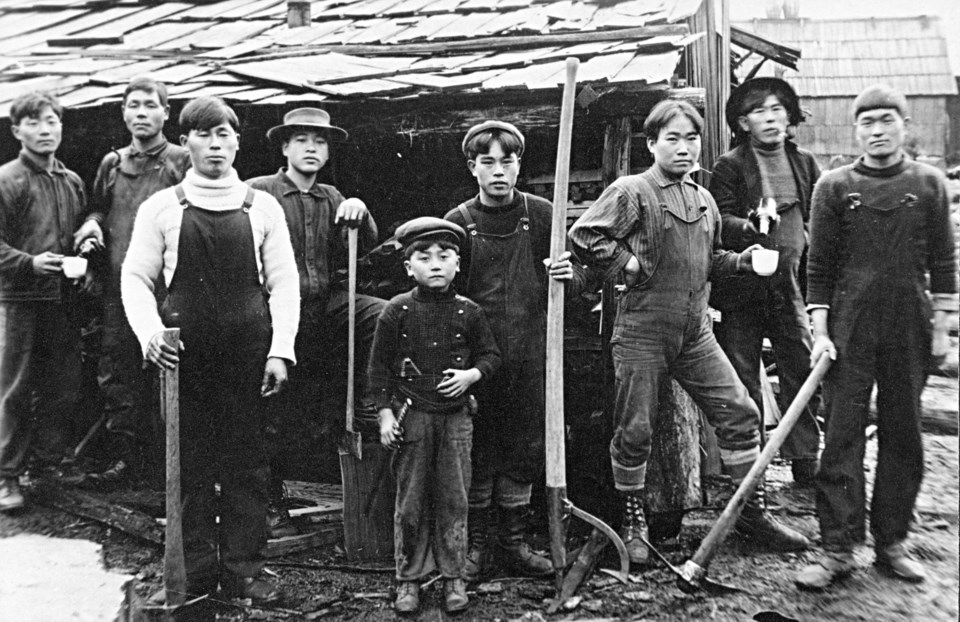This ca. 1905 photograph shows Japanese Loggers of Rice Lake at the Hastings Shingle Mill. The boy holding the hilt of a sword is Shigeo, son of a labour contractor, Tosaku Kato.
An old Japanese logging camp was discovered and excavated in the Seymour area by students from Capilano University led by Bob Muckle, Capilano University professor and archeologist. The site is located about halfway between Rice Lake and the Seymour Dam.
In addition to typical logging remains, Japanese artifacts and the foundations of 12 buildings were discovered. Based on the archaeological evidence, the settlement was large enough for about 40 to 50 people – loggers, their wives and children.
The Nikkei who built the village made sure it included structures important to their traditional Japanese way of life, including a communal bathhouse, gardens and an elevated platform that may once have been a Shinto shrine.
The camp was likely built around 1919 and is believed to have remained a settlement after the last trees were cut around 1924.
Visit the MONOVA website for more information about the history of the North Shore and to learn about MONOVA: Museum of North Vancouver opening in Fall 2021.
Currently, MONOVA: Archives of North Vancouver at 3203 Institute Rd. in Lynn Valley is open by appointment only. Contact: [email protected]
Navigate culture on the North Shore by using the North Shore Culture Compass.



